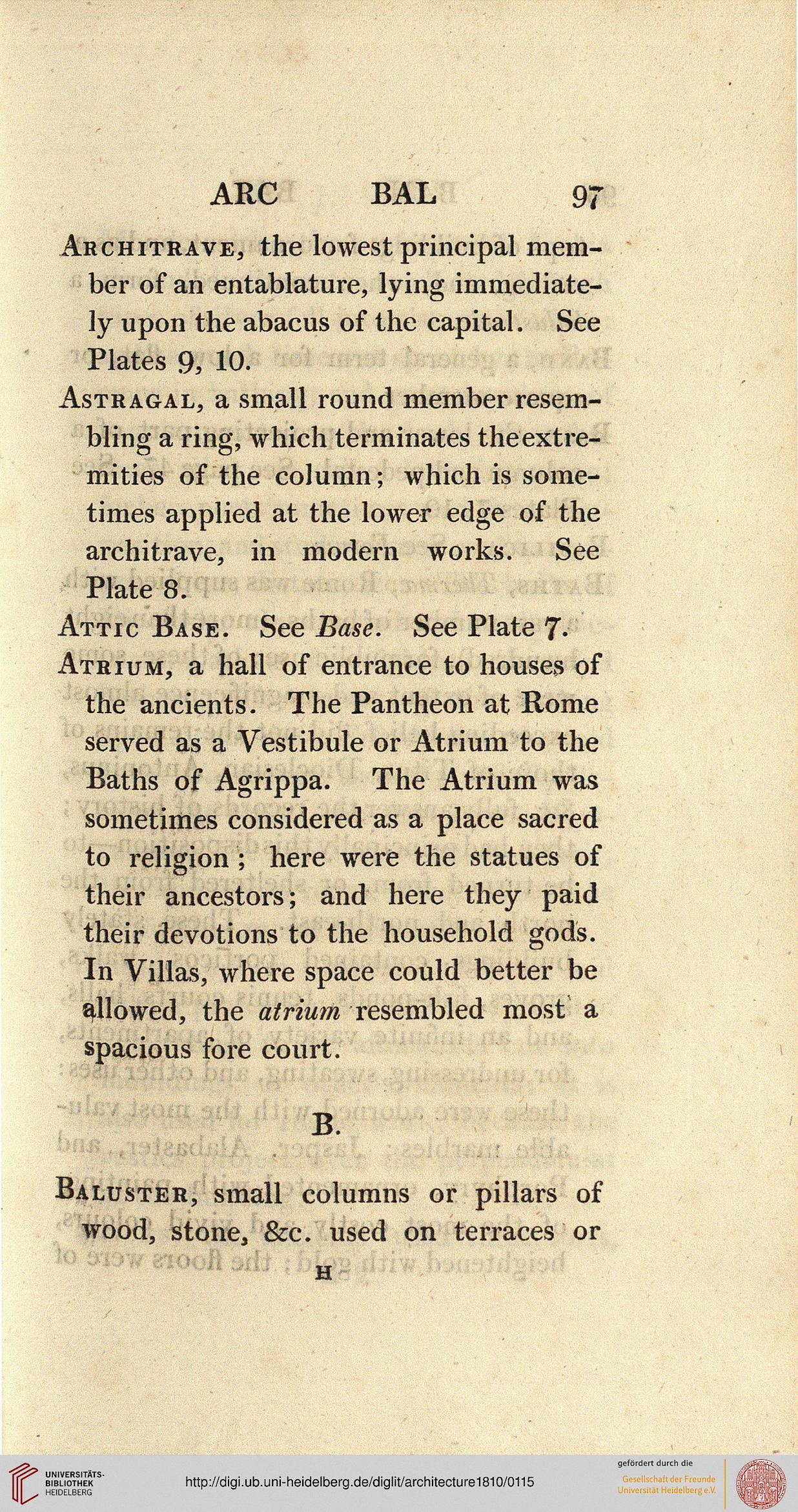ARC BAL 97
Architrave, the lowest principal mem-
ber of an entablature, lying immediate-
ly upon the abacus of the capital. See
Plates 9, 10.
Astragal, a small round member resem-
bling a ring, which terminates theextre-
mities of the column; which is some-
times applied at the lower edge of the
architrave, in modern works. See
Plate 8.
Attic Base. See Base. See Plate f.<
Atrium, a hall of entrance to houses of
the ancients. The Pantheon at Rome
served as a Vestibule or Atrium to the
Baths of Agrippa. The Atrium was
sometimes considered as a place sacred
to religion; here were the statues of
their ancestors; and here they paid
their devotions to the household gods.
In Villas, where space could better be
allowed, the atrium resembled most a
spacious fore court.
B.
Baluster, small columns or pillars of
wood, stone, &c. used on terraces or
H
Architrave, the lowest principal mem-
ber of an entablature, lying immediate-
ly upon the abacus of the capital. See
Plates 9, 10.
Astragal, a small round member resem-
bling a ring, which terminates theextre-
mities of the column; which is some-
times applied at the lower edge of the
architrave, in modern works. See
Plate 8.
Attic Base. See Base. See Plate f.<
Atrium, a hall of entrance to houses of
the ancients. The Pantheon at Rome
served as a Vestibule or Atrium to the
Baths of Agrippa. The Atrium was
sometimes considered as a place sacred
to religion; here were the statues of
their ancestors; and here they paid
their devotions to the household gods.
In Villas, where space could better be
allowed, the atrium resembled most a
spacious fore court.
B.
Baluster, small columns or pillars of
wood, stone, &c. used on terraces or
H




